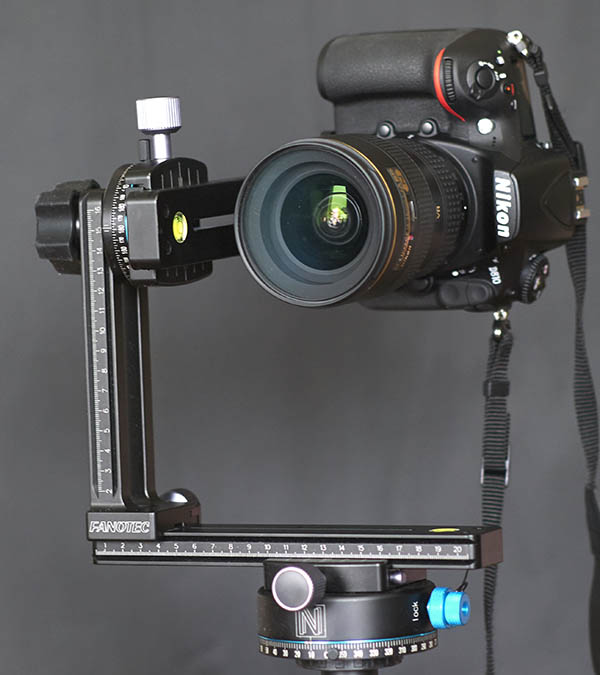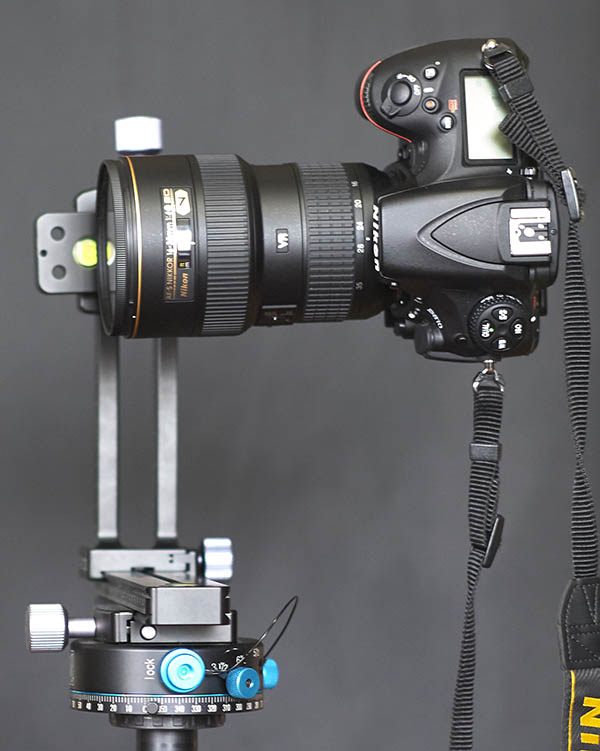Wide angle zoom
Over the past few years one of the biggest changes for panoramic photographers has been the advent of the wide angle zoom lenses. Some of these lenses have at least the optical performance of their fixed focal length ancestors. Being able to choose a focal length allows choice of the vertical field of view for a horizontal panorama and vice versa.

A Nodal Ninja M2 panoramic head holding a Nikon D810 with 16-35mm f4 lens
Unfortunately there are also several associated problems. The biggest in my view is the distance between the effective lens pinhole position and the camera body. First this requires a panoramic head with a very large adjustment range. To cope with this the panoramic head also needs to be stronger and hence heavier to withstand the increased loads. In the image below it can be seen that the camera centre of gravity is a long way horizontally from the centre of rotation of the panoramic head. The camera is also a long way vertically from the base of the panoramic head. This is so that the camera can be pointed at or near the zenith for those that want a full hemisphere of image. These out of balance forces also put a greater stress on the tripod which needs a wide base to prevent toppling.
There is also a more subtle problem. The effective position of the lens changes with zoom position. Zooming the camera therefore requires the camera to be re-postioned in the panoramic head. From my own measurements of a Nikon 16-35mm f4 lens the camera offset varied from 154 to 162mm. This was smaller than I expected and can probably be ignored except for critical imaging of objects close to the lens.

Out of balance forces with a wide angle zoom
Despite these niggles the quality of the modern lenses is so good that the above lens is the one that stays on the camera most of the time.

